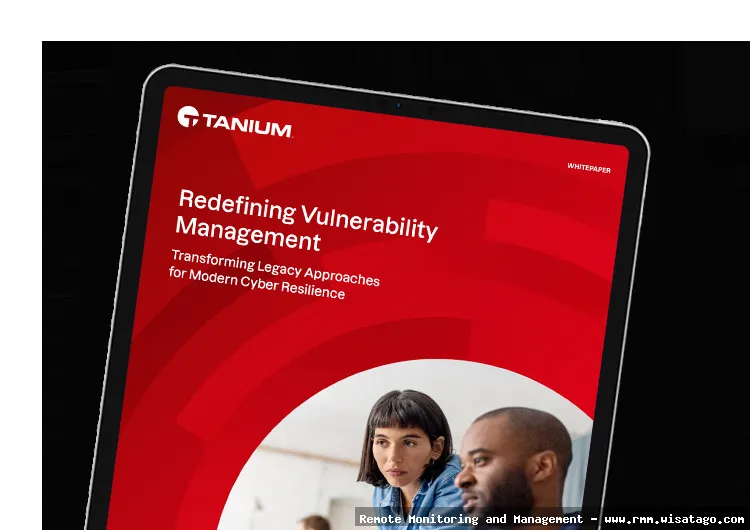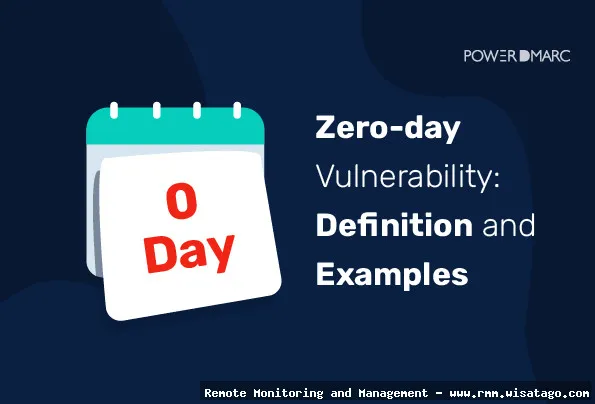Zero-day vulnerabilities. The very name sends a shiver down the spine of any seasoned IT professional. These unknown security flaws, exploited before a patch is available, represent a significant threat to organizations of all sizes. In today’s hyper-connected world, where businesses rely heavily on digital infrastructure, a zero-day exploit can lead to data breaches, financial losses, reputational damage, and even complete system shutdowns. The challenge isn’t just identifying these vulnerabilities – it’s mitigating the risk they pose in the incredibly short window of time between discovery and exploitation.
Fortunately, Remote Monitoring and Management (RMM) platforms offer a powerful arsenal for tackling zero-day threats. RMM solutions provide IT teams with the visibility and control necessary to proactively monitor systems, detect anomalies, and rapidly deploy countermeasures. While not a silver bullet, a well-configured RMM can significantly reduce the attack surface and minimize the impact of zero-day exploits. This article will delve into the specifics of how RMM platforms contribute to zero-day vulnerability management, exploring key features, practical benefits, and the challenges involved in implementation.

Think of your RMM as the central nervous system of your IT infrastructure. It’s constantly gathering data, analyzing trends, and alerting you to potential problems. When it comes to zero-day vulnerabilities, this constant vigilance is crucial. By leveraging the monitoring, automation, and patching capabilities of an RMM, you can significantly improve your organization’s security posture and respond swiftly when the inevitable zero-day threat emerges. Let’s explore how to leverage these capabilities to build a robust defense against the unknown.
Understanding Zero-Day Vulnerabilities
A zero-day vulnerability, as the name implies, is a software flaw that is unknown to the vendor. This means that there is no patch or fix available when the vulnerability is first exploited. Hackers often discover these vulnerabilities before the software vendor does, giving them a crucial “zero-day” advantage to exploit the flaw before a defense can be mounted.
The Lifecycle of a Zero-Day Exploit
Understanding the lifecycle of a zero-day exploit is crucial for effective management:

- Discovery: A hacker or security researcher discovers a previously unknown vulnerability in a software application or operating system.
- Exploitation: The hacker develops an exploit, a piece of code that takes advantage of the vulnerability. This exploit is then used to gain unauthorized access to systems or data.
- Disclosure (or Lack Thereof): The hacker may choose to disclose the vulnerability to the software vendor or keep it secret for their own malicious purposes.
- Patch Development: If the vulnerability is disclosed, the software vendor will develop and release a patch to fix the flaw.
- Patch Deployment: IT teams must deploy the patch to all affected systems to close the vulnerability.
- Window of Opportunity: The time between the vulnerability’s discovery and the patch deployment is the “window of opportunity” for attackers to exploit the flaw. This is the critical period that zero-day vulnerability management aims to minimize.
The Impact of Zero-Day Exploits
The impact of a successful zero-day exploit can be devastating. Potential consequences include:
- Data Breaches: Sensitive data, such as customer information, financial records, or intellectual property, can be stolen.
- System Downtime: Critical systems can be taken offline, disrupting business operations.
- Financial Losses: Costs associated with incident response, recovery, and legal liabilities can be substantial.
- Reputational Damage: A data breach can erode customer trust and damage an organization’s reputation.
- Ransomware Attacks: Zero-day vulnerabilities can be used to deploy ransomware, encrypting data and demanding a ransom for its release.
RMM: A Powerful Tool for Zero-Day Vulnerability Management
RMM platforms are designed to provide IT teams with comprehensive visibility and control over their IT infrastructure. This makes them invaluable tools for managing zero-day vulnerabilities.
Key RMM Features for Zero-Day Vulnerability Management
Several key RMM features contribute to effective zero-day vulnerability management:

- Real-time Monitoring: RMM platforms constantly monitor systems for suspicious activity, such as unusual network traffic, unexpected process execution, or unauthorized file access.
- Vulnerability Scanning: RMM solutions can scan systems for known vulnerabilities, helping to identify potential weaknesses that could be exploited by attackers. While they can’t directly detect zero-days (by definition, they are unknown), they can help harden the environment and reduce the attack surface.
- Patch Management: RMM platforms automate the process of deploying security patches, ensuring that systems are quickly updated to address known vulnerabilities. This is crucial for mitigating the risk of newly disclosed vulnerabilities that are quickly weaponized after initial discovery.
- Endpoint Detection and Response (EDR) Integration: Many RMM solutions integrate with EDR tools, providing advanced threat detection and response capabilities. EDR can help identify and contain zero-day exploits by analyzing endpoint behavior and detecting malicious activity.
- Automation: RMM platforms allow IT teams to automate tasks such as patching, system configuration, and security policy enforcement, reducing the workload and improving efficiency.
- Alerting and Reporting: RMM solutions provide real-time alerts when suspicious activity is detected, allowing IT teams to respond quickly to potential threats. They also generate reports that provide insights into the organization’s security posture.
- Remote Access and Control: RMM platforms enable IT teams to remotely access and control systems, allowing them to quickly investigate and remediate security incidents.
- Software Inventory Management: Knowing what software is installed on each endpoint is critical. RMM tools provide a comprehensive software inventory, helping identify vulnerable applications and prioritize patching efforts.
How RMM Helps Mitigate Zero-Day Risks
RMM platforms help mitigate zero-day risks in several ways:
- Early Detection: Real-time monitoring and EDR integration can help detect zero-day exploits in their early stages, before they can cause significant damage. Anomaly detection is key here. If a system starts behaving in a way that is significantly different from its normal baseline, it could be a sign of a zero-day exploit.
- Rapid Response: Automated patching and remote access capabilities allow IT teams to quickly deploy countermeasures and contain the spread of an attack.
- Reduced Attack Surface: By identifying and patching known vulnerabilities, RMM platforms help reduce the attack surface, making it more difficult for attackers to find and exploit zero-day flaws. Keeping systems up-to-date with the latest security patches is always a best practice, even if it doesn’t directly address a specific zero-day vulnerability.
- Improved Security Posture: RMM platforms help organizations maintain a strong security posture by automating security tasks, enforcing security policies, and providing visibility into the IT environment.
Implementing RMM for Zero-Day Protection: Best Practices
Implementing an RMM solution is just the first step. To effectively leverage RMM for zero-day vulnerability management, organizations need to follow these best practices:
Configuration and Customization
- Tailor Monitoring Policies: Customize monitoring policies to reflect the specific risks and vulnerabilities of the organization’s IT environment. Focus on monitoring critical systems and applications.
- Configure Alerting Thresholds: Set appropriate alerting thresholds to minimize false positives and ensure that IT teams are notified of genuine security threats. Too many alerts can lead to alert fatigue, where important alerts are missed.
- Integrate with Security Tools: Integrate the RMM platform with other security tools, such as EDR, SIEM (Security Information and Event Management), and threat intelligence feeds, to enhance threat detection and response capabilities.
Patch Management Strategies
- Automate Patch Deployment: Automate the deployment of security patches to ensure that systems are quickly updated to address known vulnerabilities. Consider using a phased rollout approach, where patches are first deployed to a small group of test systems before being rolled out to the entire organization.
- Prioritize Patching: Prioritize patching based on the severity of the vulnerability and the criticality of the affected systems.
- Regularly Review Patch Management Policies: Regularly review and update patch management policies to ensure that they are effective and aligned with the organization’s security goals.
Training and Awareness
- Train IT Staff: Train IT staff on how to use the RMM platform effectively and how to respond to security incidents.
- Raise User Awareness: Educate users about the importance of security and how to identify and report suspicious activity. Phishing simulations can be a valuable tool for raising user awareness.
Regular Audits and Assessments
- Conduct Regular Security Audits: Conduct regular security audits to identify weaknesses in the organization’s security posture.
- Perform Vulnerability Assessments: Regularly perform vulnerability assessments to identify potential vulnerabilities that could be exploited by attackers.
- Penetration Testing: Conduct penetration testing to simulate real-world attacks and identify weaknesses in the organization’s defenses.
Challenges and Considerations
While RMM platforms offer significant benefits for zero-day vulnerability management, there are also some challenges and considerations to keep in mind:

False Positives
RMM platforms can generate false positives, which can waste IT teams’ time and resources. It’s important to carefully configure monitoring policies and alerting thresholds to minimize false positives.
Complexity
RMM platforms can be complex to configure and manage. IT teams need to have the necessary skills and expertise to effectively use the platform.
Cost
RMM platforms can be expensive, especially for small businesses. However, the cost of an RMM platform is often outweighed by the benefits it provides in terms of improved security and reduced IT costs.

The Human Element
Even the best RMM solution is only as good as the people using it. Proper training, well-defined processes, and a strong security culture are essential for effective zero-day vulnerability management. Don’t rely solely on the technology; invest in your people and processes as well.
Conclusion
Zero-day vulnerabilities pose a significant threat to organizations of all sizes. RMM platforms offer a powerful set of tools for managing these risks. By leveraging the monitoring, automation, and patching capabilities of an RMM, organizations can significantly improve their security posture and respond swiftly when the inevitable zero-day threat emerges. While challenges exist, the benefits of implementing RMM for zero-day vulnerability management far outweigh the costs. By following best practices and investing in the right technology and training, organizations can significantly reduce their risk of falling victim to a zero-day exploit and protect their valuable data and systems.
Conclusion
Effectively managing zero-day vulnerabilities is no longer a luxury, but a necessity in today’s threat landscape. As we’ve explored, Remote Monitoring and Management (RMM) platforms offer a powerful and centralized approach to mitigate the risks posed by these unpredictable exploits. By leveraging RMM‘s capabilities for proactive monitoring, rapid patching, and automated response, organizations can significantly reduce their attack surface and minimize the potential damage from zero-day attacks. Implementing a robust strategy that incorporates real-time threat intelligence and a well-defined incident response plan is critical for sustained protection. For more information, you can refer to RMM as an additional resource.
Ultimately, a proactive and layered security approach, with RMM as a central component, provides the best defense against the ever-evolving threat of zero-day vulnerabilities. Don’t wait for a zero-day exploit to impact your business. Evaluate your current security posture and consider how an RMM solution, coupled with a comprehensive vulnerability management strategy, can strengthen your defenses. To learn more about implementing zero-day vulnerability management with RMM, explore resources and expert advice from trusted cybersecurity providers. Start building a stronger, more resilient security foundation today.
Frequently Asked Questions (FAQ) about Zero-Day Vulnerability Management via RMM
How can a Remote Monitoring and Management (RMM) tool help my business mitigate the risks associated with zero-day vulnerabilities?
An RMM tool can significantly improve your zero-day vulnerability management strategy by providing several crucial capabilities. Firstly, it offers centralized visibility across all your endpoints, allowing you to quickly identify potentially vulnerable systems. Secondly, RMMs facilitate rapid deployment of patches and workarounds as soon as they become available, minimizing the window of opportunity for attackers to exploit the zero-day vulnerability. Thirdly, RMMs often include endpoint detection and response (EDR) features that can detect and block suspicious activity indicative of an exploit attempt, even before a patch is available. Furthermore, robust reporting capabilities within the RMM allow you to track the progress of remediation efforts and demonstrate compliance.
What specific features within an RMM platform are most important for effective zero-day vulnerability protection and what should I look for when evaluating different RMM solutions?
When evaluating RMM solutions for zero-day vulnerability protection, several key features stand out. Prioritize solutions with strong patch management capabilities, allowing for automated deployment and testing of updates. Look for integration with threat intelligence feeds to identify emerging threats and associated indicators of compromise (IOCs). Endpoint detection and response (EDR) functionalities within the RMM are crucial for detecting and responding to suspicious behavior. Furthermore, ensure the RMM offers robust scripting capabilities to quickly deploy custom workarounds or mitigations. Finally, consider RMMs with vulnerability scanning features that can identify unpatched software and misconfigurations that could be exploited, even before a formal zero-day vulnerability advisory is released.
Besides automated patching, what other proactive steps can I take, in conjunction with my RMM, to minimize the impact of a potential zero-day exploit on my IT infrastructure?
Beyond automated patching through your RMM, several proactive measures can significantly reduce the impact of a potential zero-day exploit. Implement a strong security awareness training program for employees, educating them about phishing attacks and other social engineering tactics often used to deliver malware. Regularly review and update your firewall rules to restrict unnecessary network traffic. Employ application whitelisting to prevent unauthorized software from running on your systems. Implement the principle of least privilege, granting users only the necessary permissions to perform their job functions. Furthermore, regularly back up your critical data to ensure business continuity in the event of a successful attack. Segmenting your network can also limit the blast radius of a zero-day exploit, preventing it from spreading to other parts of your infrastructure.